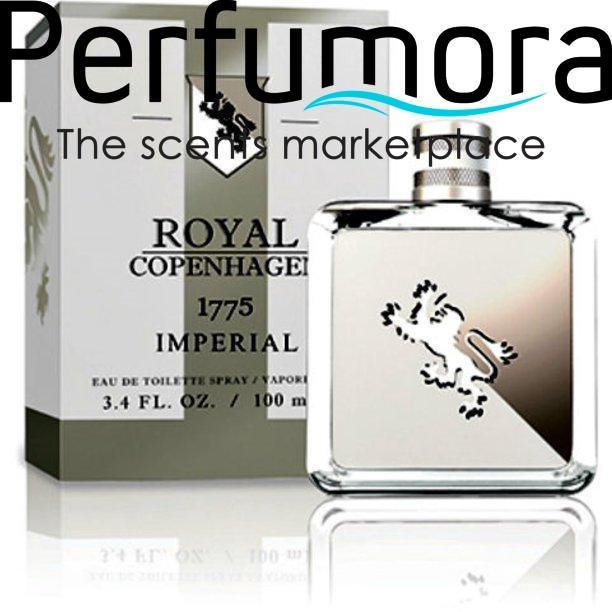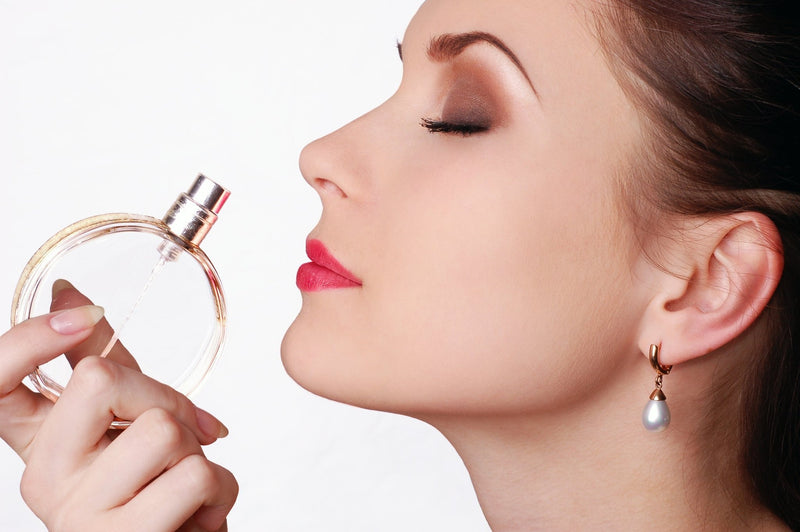
Citrusy and Fresh
These are the notes that make you feel fresh and almost light headed for a moment. They are responsible for almost all the top notes that define the spectrum of hesperidic fruits. Greek mythology’s nymph Hesperidia was the inspiration behind the name and these are fruits or raw materials that also include verbena and lemongrass. These and resins are among the most ancient ingredients in perfumery. To preserve the inherent freshness of the extract, citrus essences are mostly cold-expressed with Petitgrain being an exception, as it is derived through steam distillation of leaves and twigs of the bitter orange tree.
Citruses provide an effervescent quality to fragrances, clear your mind and make you feel sunny and buoyant. They lend sharpness to your air, add elegance and cleanliness to your aura. The fresh and tart Citrus notes compliment the sweet floral and resinous notes and also lend a good tartness to other sugary notes. The modern day sources of these scents are Grapefruit, Pomelo, Yuzu and Hassaku.
Fruit and Nut
Fruity notes have become a separate category of their own due to their rising popularity. The high content of water in fruits makes them resistant to distillation and extraction processes. Their natural make-up being such keeps them as a reconstructed note in fragrances. Fruits give a succulent note and a musty yet mysterious characteristic to the perfume. They provide a shaded texture and a refreshing feel to your fragrances. Fruits such as plum and peach have become extremely popular along with apple and kiwi. They act as bases for many fragrances lending a sweet freshness with a hidden layer to the perfume.
Though reconstructed notes in perfumery, Nuts too can act as a base for ethereal fragrances like Vetiver. They have become almost synonymous with almond (recreated with the materials used for heliotrope and mimosa reconstructions). Peanuts (as in Bois Farine), Hazelnuts (as in Praline de Santal & Mechant Loup) are beautiful anchors to earthy materials and give a grounded wholesomeness to your perfume.
Flowers
The Colored Ones…
What could be more obvious than the candid yet soft conveyors of fragrance? Blossoming flowers have been a source of perfumes for ages and continue to be so still. They never cease to fascinate us and Rose and Jasmine are the most popularly used scents that are found in almost every flowery perfume. Their incomparable essences can be extracted through many different techniques such as Solvent Extraction, Enfleurage and Distillation. Broom, Lavender, Ylang Ylang, Tuberose, Osmanthus and Marigold are some other popular natural flower extracts.
Floral scents are lush, divine and romantic by nature. They offer femininity to a composition and believe it or not, they enter almost all perfume blends in one form or another; yes, even in your masculine colognes. There are many flowers yet that refuse to yield their scent and core aroma. Even if some is extracted, the quantity is so miniscule that replicating them in a lab seems more practical. Essences from flowers such as Violet, Lotus and Water Lily can be derived but the tiny yield can only be afforded by niche and all-natural brands in the perfumery business.
Let There Be White…
White flowers like Orange Blossom, Gardenia, Jasmine, Tuberose, Frangipani and even Honeysuckle are the true messengers of sweet headiness and nectarous femininity. White florals give off a lush, intoxicating and opulent scent that is often characterized as narcotic.
Leaves, Herbs and Grass
Life couldn’t get any tangier than this. The "green" that is eminent here refers to notes of freshly snapped leaves and newly-cut grass. Greens, grasses and leaves exude a quality that pierces through layers of scents and reminds us of the spring season. Modern synthetics have rendered scents like Fig Leaf, Violet Leaf, and Tomato Leaf and Coconut sweetness. These notes give off an aqueous and cucumbery feel to a lot of perfume compositions, especially the masculine ones. A unique scent profile can be added to blends by using tea leaves and the perfumer may pick anyone from white, green, red, black or Oolong.
Herbs on the other hand add aromatic notes that are similar to the smells lingering in our kitchens. So it can be Thyme, Rosemary, Fresh Coriander, Mint, Tarragon, Fennel, Marjoram, Basil, Anise or Sage. Other herbs such as Artemisia, Angelica and Spikenard possess a strong herbaceous quality that adds a distinctive character to every composition.
Fern is fougère in French. It is not exactly derived from nature but from an age old unity of Lavender-Oakmoss-Coumarin. This was formulated to replicate the mysterious note of a cool, green, damp forest. Its prototype is Fougère Royale by Houbigant which was created by Paul Parquet in 1882. The result was a bittersweet concoction that had a damp and woody character and a cool feel which was recognized as being quintessentially masculine.
The Aroma of Spices
Spices can really spice up your life and this is no subject that requires any introduction. The sheer mention of their names is enough to make us realize just how hot and short they can be and yet they can also add a long and cool effect to the overall perfume blend. Cinnamon, Pepper, Dried Coriander, Cloves and Ginger and the precious hand-picked Saffron are some scents with a short fuse. Tamarind, Caraway Seeds and the very gentle Pink Pepper accompany them in their club.
Although true spices are always dried, but herbs such as Oregano, both fresh and dry have a rather distinct tang to them. This brings us to the cooler and gentler spices that have a prolonged aftertaste such as Cardamom, Fresh Coriander and Thyme.
The Succulent Sweets
This is reminiscent of the sweet, cute little Strawberry Cupcake that you were served at the conference meet today. It just sat there smelling like your sweet couch, not literally though. These are the fragrances that comfort you and are largely built on Vanilla. Now Vanilla is a creamy, dreamy, fluid and melting goodness that everyone can relate to. This is what sweets and desserts are meant to do; right from the Bitter Sweet Chocolate to the fresh dollop of Caramel-Studded Cream. From the simple and plain to the rich and complex; from the Macaroons to the Crème Brule and the Custards and so much more; the succulent sweets speak to everyone.
These are also known as Gourmand Fragrances. The first successful Gourmand Fragrance was formulated in 1992 by a well known perfume brand. It had a Choco-Caramel effect that was the result of blending Ethyl Maltol (Cotton Candy/Sugar Caramel), Natural Patchouli (for Cocoa) and industry standard Ethyl Vanillin. That was the year that marked the arrival of dessert smells in contemporary perfumery.
Although possible to derive from natural ingredients, the best results are obtained by the intermingling of natural with synthetic notes. These notes are not limited to feminine or women's fragrances but have also found an important spot among masculine or shared scents. They make you euphoric and playful, and the tingling sensations on your tongue and nose just add to the charm.
The Wooden Wonders
Woody notes are inherently base notes making for a dependable and pliable scent that provides a strong foundation for reinforcing other perfume elements. Various trees have different scent profiles and Rosewood is one such precious scent that can serve as a top or middle note. While some can be reminiscent of charred wood chips, tarry and phenolic like Guiacwood; others can be austere and cozy like Cedarwood. Sandalwood is one fragrance that is subtly sweet, soft, flowing and comforting.
Agarwood or Oud is a rich and complex scent that encompasses woody, nutty, musty and camphoraceous notes. Woody notes give you a chance to escape into your favorite season just how thinking of Pine or Fir would remind us of the white and foggy afternoons. Some wood chips are responsive to distillation and maceration giving us the luxuriant masculine fragrances but several other notes are produced through synthesis to ensure sustainability, cost effectiveness and safety.
Vetiver, being native to India, Sri Lanka and Indonesia has gained popularity around the world. Though a grass, whose root is the source of the fragrant oil, it is known to emanate a dry and warm note. It is smoky, earthy, balsamic and leathery in nature and has become a preferred ingredient among masculine and many shared fragrances.
Patchouli is another interesting exception among woody notes as it is the leaf of a bushy herb of the mint family. Native to China, Indonesia, India, Malaysia and other Asian countries, it bears small, pale pink-white flowers.
Mosses
These are the bitter notes that have a rather deep and disturbing murkiness. Their scent profile is dark and replicates the forest floor during autumn. Mosses give a grounding property to the perfume that is pensive and sensual in nature. This is one of the few raw materials that have been rationed by the International Fragrance Association (IFRA). Efforts are being made to duplicate these notes synthetically.
The Ancient and the Oriental
What Resins and balsams symbolize is the time long gone that saw the dawn of perfumery. These were the original raw materials that were often the basis of Oriental fragrances. These notes posses different olfactory profiles and aromatic properties.
Vanilla, Peru Balsam, Tolu Balsam and Benzoin are the Soft Balsamic notes that are on the sweeter and fresher side. With a gentle tone and a subtly enveloping quality, these have faint warmth that is conveying of their character. Resinous balsamic notes gel well with woody notes and are of a deeper ion texture. They are extracted from the barks of trees and linger and project. Opoponax, Myrrh, Styrax, Frankincense or Olibanum, Birch Tar and Elemi are some commonly found notes.
The Animal Within
A musky horse or a bold snow panther, which one do you want to be tonight? Animalic smells are the raw and fantastic ones. These notes are synthesized in the lab and evoke the animal in you, well not literally. These scents are reminiscent of animals either real or metaphorical. They depict the libidinous facet of the human nature and our animal instincts.
Deer Musk, Castoreum, Civet Cats and Ambergris were the traditional sources of notes in perfumery. Ethical treatment of animals and their welfare concerns have made substitution with synthetic variants mandatory making it a standard practice worldwide. Galaxolide, Habanolide, Allyl Amyl Glycolate and Ethyl Brassylate are some of the hundreds of variants of Musk that have been synthesized resulting in vaguely diverse odor profiles for each.
Amber notes again are a mix of resins, delivering a sweet, warm and deep note as opposed to Ambergris which is a rather salty, deep and vaguely skin-like note. Hyrax, Goat Hair Tincture, Beeswax, Roasted Sea Shells and some plants like Angelica and Ambrette Seeds are known as indirect sources of animalic notes as they produce compounds that replicate musk. Animalic notes often act as fixatives that slow down the evaporation process of the perfume. Other fixatives include Wood or Mosses and Resins.
Deluge of Fragrances-Beverages for Perfume
Fragrances can be tricky; they play games with your senses. They can replicate your favorite Wine or your beloved Hot Chocolate. They can be the festive fizz of your favorite Champaign or the toasted and caramelized flavor of your favorite Cola. They can either douse you into a Pina Colada or soak you in a strong shot of a Bitter Espresso.
Every single one of these delectable recreations is possible by utilizing ingredients that make up for the actual recipe, for instance Lime or Orange Juice or Vanilla extract or Cinnamon, the list goes on. Some raw materials like Rose or Berries are used to aromatize drinks such as Wines and Gins therefore accounting for their association with appetizing drinks and fruity blends.
Natural, Synthetic, Rare, Popular, Weird, Layered and Much More…
The hard to come by and the strange and unusual notes fall here. These notes are descriptive and suggestive. They can be powdery, earthy, musty and musky in various degrees and blends found across perfume compositions.




